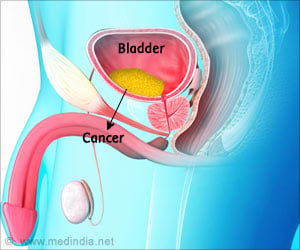Model organisms, like fruit flies and roundworms, have long been used to learn more about human biology and disease.

"We're trying to understand the basic principles that govern how genes are turned on and off," said Michael Snyder, PhD, professor and chair of genetics at Stanford. "The worm and the fly have been the premier model organisms in biology for decades, and have provided the foundation for much of what we've learned about human biology. If we can learn how the rules of gene expression evolved over time, we can apply that knowledge to better understand human biology and disease."
The research was conducted as part of a multi-institutional collaborative effort to understand more about how organisms control the expression of their genes to generate neurons, muscles, skin, blood and all of the other types of cells and tissues necessary for complex life — all at the exactly the right time and place in the body.
The research is an extension of the ENCODE, or Encyclopedia of DNA Elements, project that was initiated in 2003. As part of the large collaborative project, which was sponsored by the National Human Genome Research Institute, researchers published more than 4 million regulatory elements found within the human genome in 2012. Known as binding sites, these regions of DNA serve as landing pads for proteins and other molecules known as regulatory factors that control when and how genes are used to make proteins.
The new effort, known as modENCODE, brings a similar analysis to key model organisms like the fly and the worm. Snyder is the senior author of two of four papers that will be published Aug. 28 in Nature describing some aspects of the modENCODE project, which has led to the publication, or upcoming publication, of more than 20 papers in a variety of journals.
Postdoctoral scholar Carlos Araya, PhD, is the lead author of one of the Stanford papers, which mapped the binding sites and cellular expression patterns of 92 regulatory factors in the laboratory roundworm C. elegans. Postdoctoral scholar Alan Boyle, PhD, shares lead authorship with Araya on the second paper, which compares the newly generated roundworm data with human and fruit fly regulatory factors to identify regions of similarity and difference among the organisms. Research associate Trupti Kawli, PhD, coordinated the research in the Snyder lab and is a co-author of both papers.
"For the first time we're now able to follow in detail where and when particular regions in the genome are used to regulate gene expression, and we can map the cells in which they are operating with an unprecedented level of accuracy," said Snyder, who is also the Stanford W. Ascherman, MD, FACS, Professor in Genetics.
The exact protein players and DNA sequences involved in binding to or serving as the HOT spots also often differed among human, fly and worm — perhaps reflecting different evolutionary pressures. Those differences are a likely reason why flies, worms and humans are so distinct in shape, size, and behavior for example.
The wealth of data from the modENCODE project will fuel research projects for decades to come, according to Snyder.
"We now have one of the most complete pictures ever generated of the regulatory regions and factors in several genomes," said Snyder. "This knowledge will be invaluable to researchers in the field."
Source-Eurekalert
 MEDINDIA
MEDINDIA



 Email
Email






